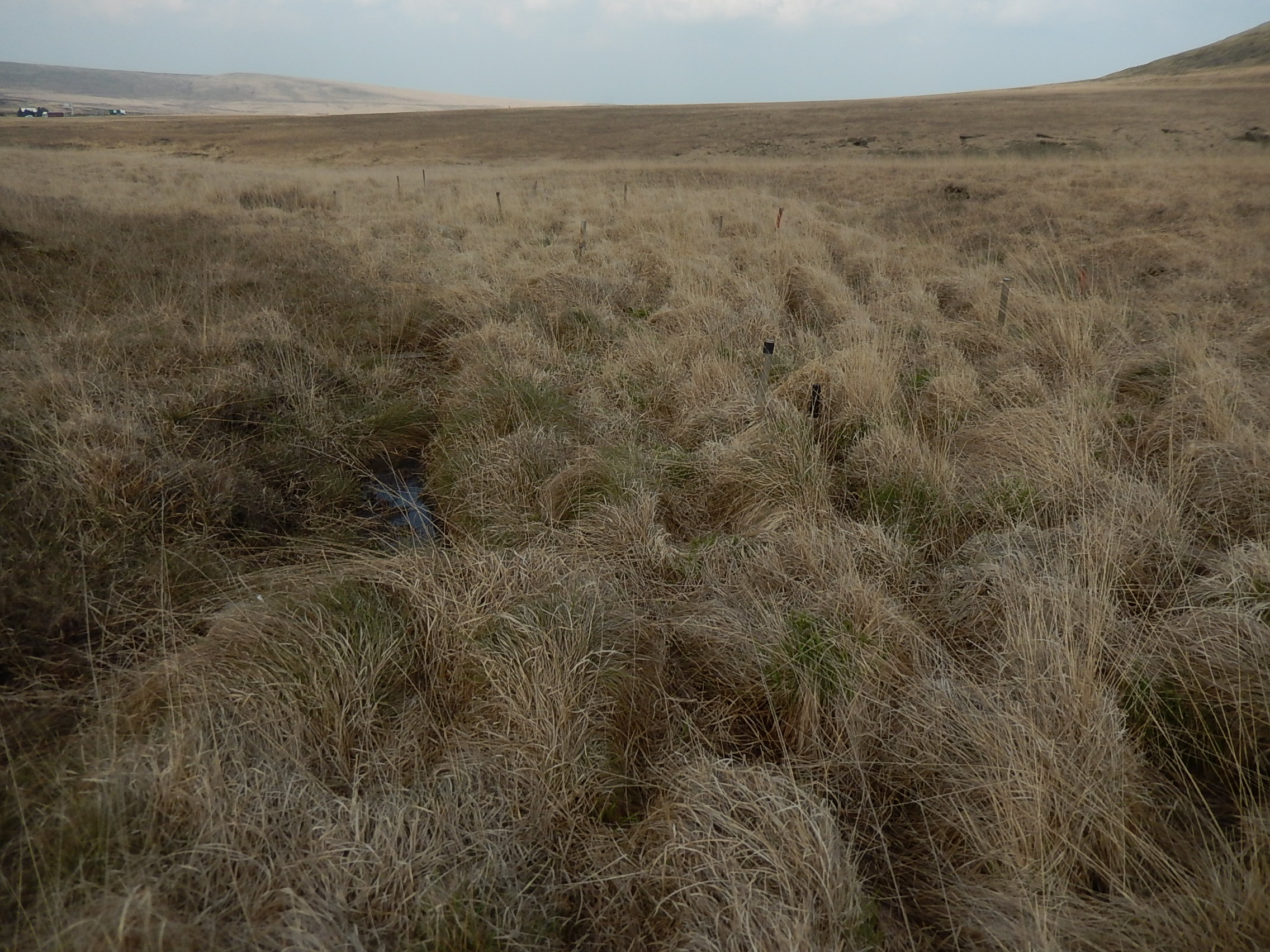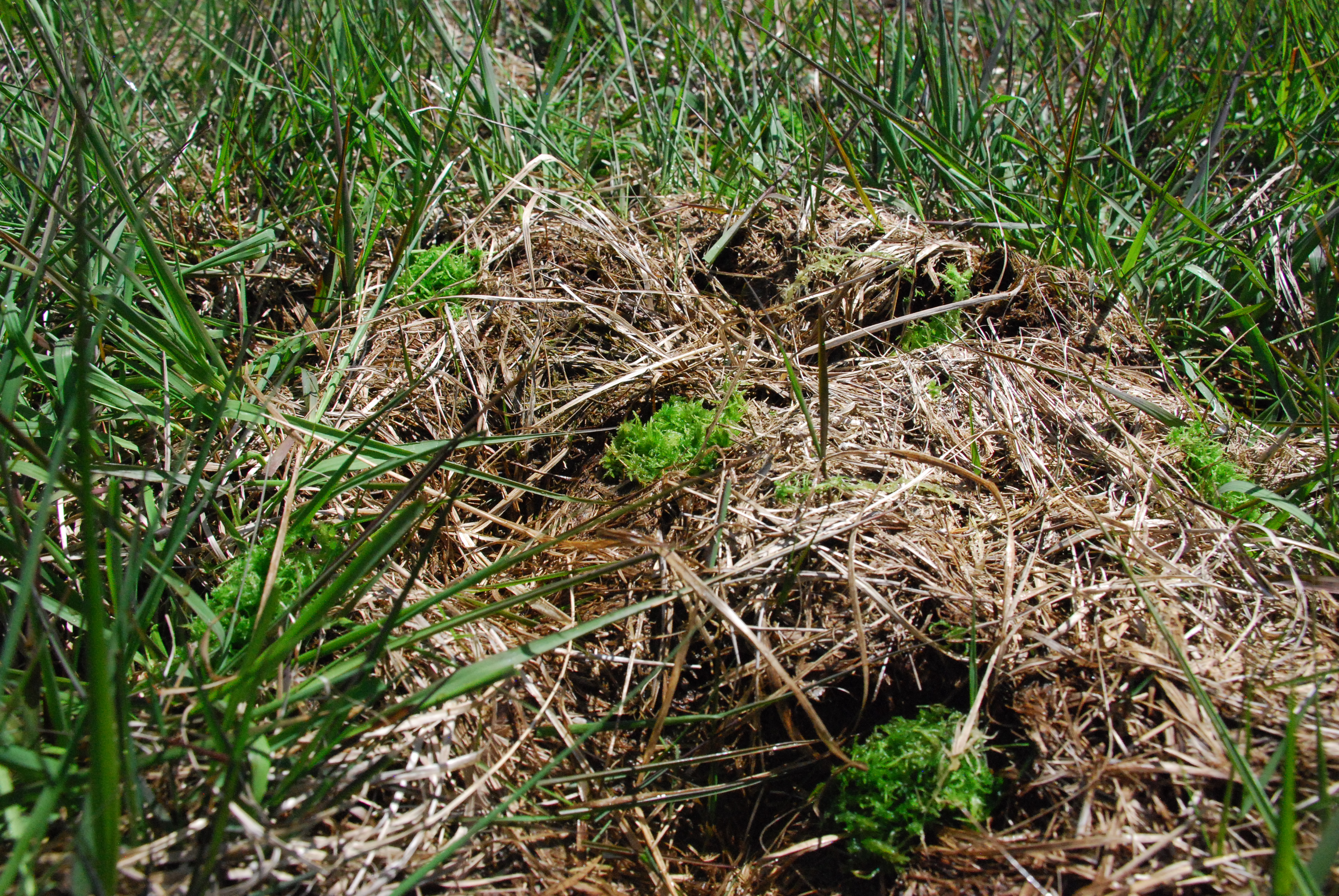A recent study has demonstrated a new way of restoring peatlands. A major store of carbon, restoring damaged peatlands represents a significant part of the UK’s plans to reduce the nation’s carbon emissions and mitigate climate change. The recommended target set by the Committee on Climate Change is to restore at least 180,000 hectares of peat by 2050 as a contribution to mitigating climate change and securing the government target to achieve Net Zero carbon emissions by 2025.
The peer-reviewed study, published in the British Ecological Society journal opens up new possibilities for restoring the UK’s threatened peatlands. It shows how invasive species that take over after wildfires can be diversified by planting a key bog-building plant, sphagnum moss.
Areas of UK upland blanket bog are becoming increasingly dominated by a moorland species called purple moor grass – ‘Molinia’. Purple moor grass has a large root system, enabling vigorous growth even in dry conditions, and also fast recovery after wildfires. The problem with having a peatland dominated by purple moor grass is that it reduces the diversity and abundance of other key blanket bog species, in particular sphagnum mosses. Sphagnum species are associated with carbon uptake and storage, low fire ignition risk and provision of clean water supplies, along with the retention of rainwater and the lowering of flood risk.
The new study reports on a trial initiated by Natural England in 2014 and carried out by Moors for the Future Partnership on three moorland sites in the South Pennines. Two of the sites were owned by Yorkshire Water, and the third by the National Trust.
This study is the first of its kind to show that sphagnum moss can be planted in plug form and is able to grow well in amongst purple moor grass-dominated blanket bogs. Able to hold up to twenty times its weight in water, sphagnum is a key component to creating the waterlogged conditions needed for a healthy, carbon-storing peatland. These conditions are also important for reducing the risk of wildfires.
In a warming climate, wildfires on peatlands are becoming more of a risk and have a catastrophic impact. The fires release vast amounts of carbon into the atmosphere, especially if the peat itself catches fire. The warming temperatures of climate change make wildfires the biggest threat to UK peatlands. In 2018, one fire alone in the Peak District National Park was estimated to release over 11,000 tonnes of carbon dioxide (CO2) over a period of a few days, equivalent to a whole year of emissions from approximately 1,500 homes.
It is hoped that further studies will show stronger growth of sphagnum in the vicinity of shallow bunds. Bunds are long, low mounds of peat, which retain water in shallow pools behind them, causing the water to be released at a slower rate. These methods are expected to create the crucial waterlogged conditions needed to tip the balance of competition in favour of sphagnum moss growth, and wetter, healthier, peat-building blanket bogs that will also restrict the growth of purple moor grass.
CEO of Yorkshire Water, Liz Barber, said,
“This work is profoundly important for water supply, water quality and flood attenuation but also vital for carbon sequestration.
“The northern peatlands are integral to the provision of water supply in our region. Almost half of the water Yorkshire Water supplies to customers originates in deep peat catchments. We all depend on the northern peatland for our water provision and when peat degrades it has a significant impact on our ability to supply water.
“Other benefits of peatland restoration are ecosystem services, biodiversity, carbon storage and sequestration, wildfires and management and, importantly, the state of the rural economy. As Yorkshire’s second largest landowner, we’re not here to support the restoration of peat solely because we are a water supplier. As peat degrades it becomes less resilient to the impacts of climate change and we have worked closely with peat partnerships over the last 15 years to help these important landscapes to recover.’’
Natural England Manager of Yorkshire & Northern Lincolnshire, Stuart Masheder, said:
‘‘This study offers insight into restoring areas of peatlands which have had little scientific research to date. Unlocking our understanding could make a significant contribution to restoring peatlands and mitigating climate change.”“Purple moor grass is not a key peat-forming plant, and the successful introduction of sphagnum moss to these areas of moorland dominated by the species will support peatland restoration in this area.”
“The successful restoration of our peatlands will help contribute towards government commitments in the 25 Year Environment Plan, building a wider Nature Recovery Network across the country and protecting these spaces for future generations to come.”
National Trust Countryside Manager for West Yorkshire, Rosie Holdsworth said,
“This study will help shape the way we restore our moorland, building on our existing work planting sphagnum moss across Marsden Moor.’’‘’With many areas of uplands suffering from degraded peat and wildfire events in recent years, the work we do through Moors for the Future Partnership across National Trust land in West Yorkshire and the Peak District is vital.’’
‘’We’re working hard to restore these moorlands, to better store water, increase biodiversity, capture carbon, reduce flood risk and reduce fire risk. This will benefit people, nature and the climate.”
Read the full study on the British Ecology Society journal – https://besjournals.onlinelibrary.wiley.com/doi/10.1002/2688-8319.12113

